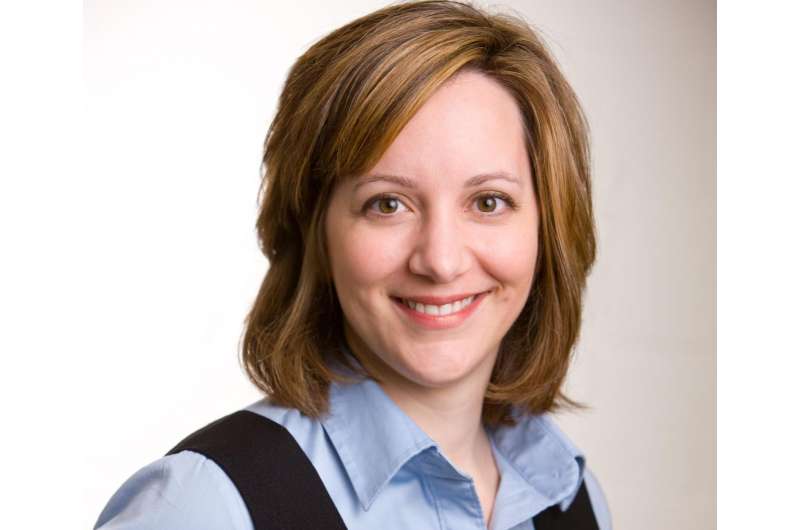Genetics are key to hormone therapy lowering risk of broken bones in older women

Women at the highest genetic risk for fracture benefit the most from hormone therapy, according to a first-of-its-kind study led by researchers at the University at Buffalo.
The study included nearly 10,000 participants from the Women's Health Initiative (WHI), a national, long-term study of more than 150,000 women.
"We found that women who are genetically at the highest fracture risk can enjoy the greatest protection from fracture when they use hormone therapy," said Heather Ochs-Balcom, associate professor of epidemiology and environmental health in UB's School of Public Health and Health Professions, who led the research team.
The findings were published online ahead of print in the Journal of Clinical Endocrinology and Metabolism. The paper's first author, Youjin Wang, conducted the research as a doctoral candidate in epidemiology and environmental health at UB.
"This study provides a better understanding of who can benefit the most in terms of bone health from hormone therapy use," Ochs-Balcom said, adding that the results have implications for personalized medicine. "It's important information as women and their doctors make decisions about hormone therapy use."
The study, believed to be the first to investigate gene-hormone therapy interaction on fracture in postmenopausal white women, utilizes the largest set of known genes linked to fracture risk from a meta-analysis of genome-wide association studies.
Researchers looked at a subset of 9,922 women from among the more than 27,000 who had participated in WHI hormone therapy clinical trials. They wondered whether women who are more genetically susceptible to fractures could benefit from hormone therapy.
"This is important because, as previous WHI studies have identified, there are risks and benefits with hormone therapy," Ochs-Balcom said. "This is where precision or personalized medicine comes in—the attempt to get the right drugs to the right person to ensure the most benefit and least harm."
As women age, their bone mineral density (BMD) decreases, leaving them at greater risk of breaking bones from falling, which also increases as they age. But some women also are more genetically prone to fractures. "Our study represents a first look at how inherited predisposition to fracture is related to hormone therapy use," said Ochs-Balcom, who also holds a faculty appointment in the Department of Genetics, Genomics and Bioinformatics in UB's Jacobs School of Medicine and Biomedical Sciences.
Wang notes that "further studies on gene-therapy interaction are warranted to evaluate the advantages of targeted interventions based on genetic profile." The research team is currently analyzing other gene-environment interactions and recently published another paper on the association of calcium plus vitamin D supplementation and genetic risk of fracture.
In addition to Wang and Ochs-Balcom, other UB co-authors include Jean Wactawski-Wende, dean of the School of Public Health and Health Professions and SUNY Distinguished Professor and professor of epidemiology and environmental health; and Leah Preus, Kathleen Hovey and Jing Nie from the School of Public Health and Health Professions.
Additional co-authors include Lara Sucheston-Campbell, Rebecca Jackson and Samuel Handelman, The Ohio State University; Rami Nassir, University of California, Davis; and Carolyn Crandall, University of California, Los Angeles.
The Women's Health Initiative began in 1991 and consisted of a set of clinical trials and an observational study. Combined, they included more than 161,000 generally healthy postmenopausal women aged 50 to 79.
One of 40 WHI centers nationwide, the University at Buffalo serves as the Northeast Regional Center, managing data collection and scientific coordination among nine WHI-affiliated institutions in the mid-Atlantic and Northeast regions. UB has received WHI extension funding to conduct follow-up studies on the original participants, many of whom are now between ages 67 and 100.
More information: Gene-hormone therapy interaction and fracture risk in postmenopausal women, The Journal of Clinical Endocrinology & Metabolism (2017). DOI: 10.1210/jc.2016-2936

















